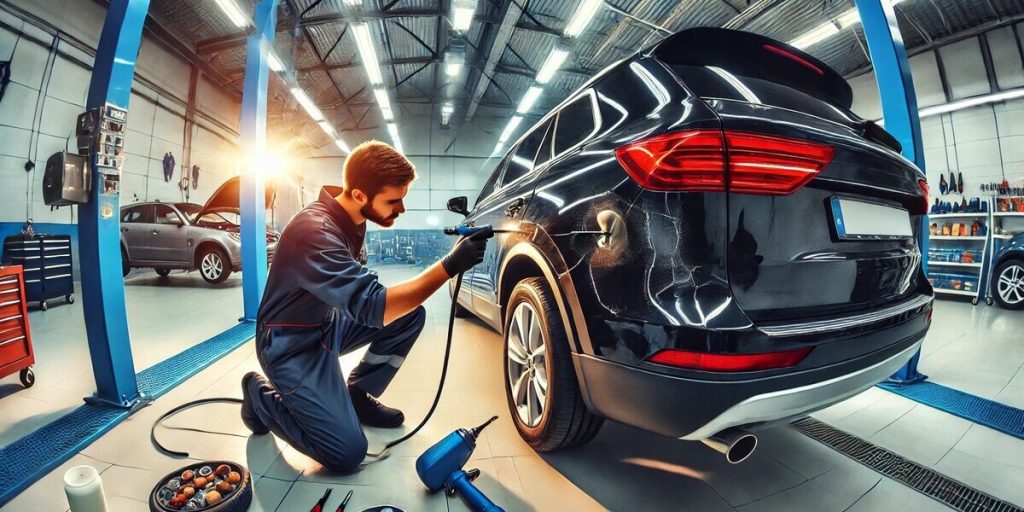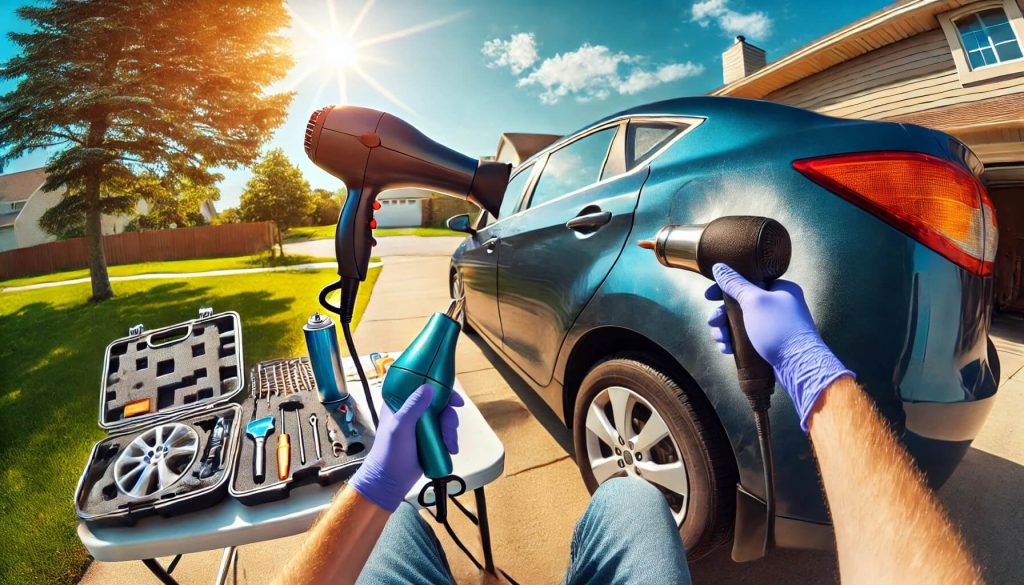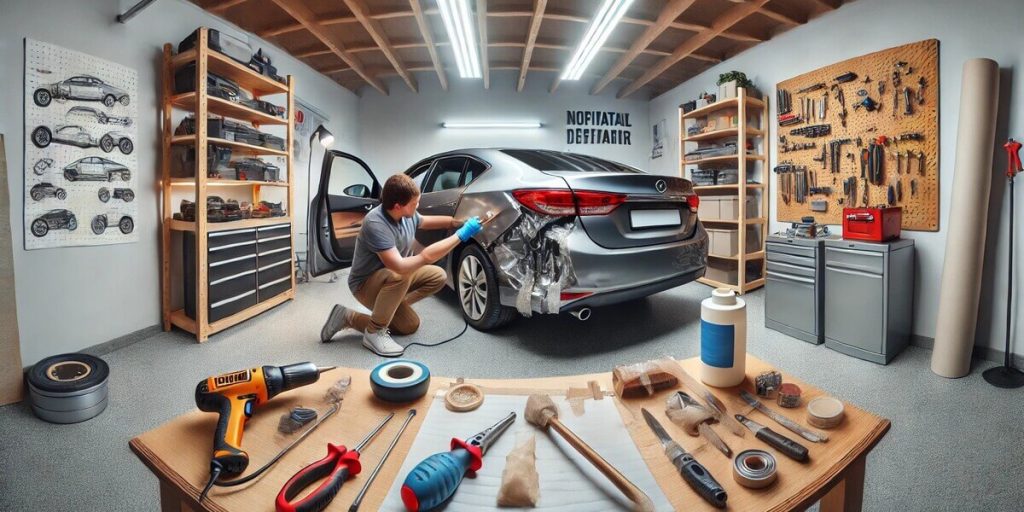This article was updated in December 30, 2024 with new products and information by Mark S. Taylor
Last summer, I faced the most annoying issue with my vehicle; I had a noticeable dent on the door of my car. While I was coming out from a grocery store, my car door sustained a dent. I was frustrated but got over it and decided to fix it myself. The rest of the experience was a journey from learning, making mistakes and trying again.
To begin with, I searched for DIYs that could assist me on how to fix a dent in a car. I equipped myself with a kettle filled with hot water and a plunger. Unfortunately, the hot water trick did only half of the job. To avoid conflicting results, I utilized a hairdryer with compressed air. After some time, my annoyance was replaced with satisfaction as the dent was fixed.
In addition, this was a fruitful experience for me as I learned the importance of being patient and the optimal time to fix an issue single-handedly. Fixing the dent was not effortless but fixable.

Contents
Dents: A Detailed Overview
Dents can be categorized into numerous varieties. Some of the common types of dents include:
- Shallow Dents: Easy to fix as they are quite minimal in size and depth.
- Cresses: These are more intricate, complex types of door dents which would most likely need the help of a professional.
- Sharp Dents: A result of sharp objects which are more difficult to fix.
- Hail Damage: Hailstones create many small dents all over the car, which are quite stubborn to deal with.
What are the Common Causes of Car Dents?
Some of the everyday causes include:
- Car Dents from Parking Spaces.
- Dents from falling tree branches.
- Hailstorms.
- Car accidents or colliding with items.
Factors to Assess Before Attempting to Repair a Dent
The Size of the Dent: Fixing a small dent is considerably easier than repairing a large dent.
The Location of the Dent: A professional may be needed if the dent is located along edges or curves.
The Condition of the Paint: When the paint is compromised, any DIY method will further worsen the state.
Tools and Equipment that are Needed:
The essentials required to repair a self-inflicted dent are:
- Hairdryer with compressed air canister.
- Pulling Tabs with hot glue guns.
- Repairing kits can be purchased from auto stores or ordered online.
- Suction cups or plungers.
Safety Reminders
- Always ensure that you have goggles along with protective gloves on.
- Don’t apply too much force, as it can cause greater damage.
- While working, ensure the location is clean and has adequate light.

DIY Techniques for Repairing Large Dents:
Using Hot Water and A Plunger: This method can be effectively used on plastic bumpers.
The steps are as follows:
- Pour hot water over the dent to loosen the surface area.
- Place a plunger over the ding and gently pull it up.
- Repeat the above steps until the dent has popped out.
Pros: Effective and inexpensive when dealing with smaller dings.
Cons: This process becomes ineffective if the surface is metallic or the dent is deep.
Hairdryer & Compressed Air Method
Because of the hairdryer, the metal surface becomes unstable, and due to this, the dent pops.
Steps:
- Using a hairdryer, heat the metal surface for 30 seconds.
- Use compressed air on the denoted area.
- The denoted surface should pop out after the temperature change.
Pros: effective for shallow dents.
Cons: This method relies highly on timing and precision.
Hot Glue and Pulling Tabs
This method is efficient for larger dings that do not require paint touch up.
Steps:
- Coat pulling tabs with glue and attach them to the dent.
- Once the glue has attached the pulling tabs, gently pull on them using a dent puller.
- Remove the dent by placing glue residue where the dent needs to be.
Pros: This method is useful for larger dings.
Cons: This method is very time-consuming and requires a dent kit
Time to Contact a Specialist or an Expert
It is not good to always look at a dent and conclude it is not that big of a problem; in some cases it is better to seek help from professionals if;
- There is a crease, or the dent is exceedingly deep.
- Sensors cameras or other important components are located near the dent.
- If any DIY strategies involve relying on self efforts to fix the problem fail.

Need Professional Assistance With A Repair?
Consider These Options:
Paintless Dent Repair – This process does not damage the original paint of the car, and it focuses on repairing the dent instead of the paint.
Conventional Body Repair – This offers a repair option for when a dent is deep or when the paint is compromised
Charges: Experts can repair a dent for an amount ranging from $50 to over $500, depending on how bad the dent is.
How To Avoid Getting Future Dents?
It is better to be safe than sorry, dents can be avoided in most cases, here is how:
Don’t Park Just Anywhere: It is advised to pick spots that are not heavily populated.
Use Protecting Accessories: It helps if bumper guards or car covers are installed on the car.
Cars Need Protection From the Weather: Keeping your car indoors when it’s hailing will avoid a dent.
Maintaining your car regularly will also help prevent small issues from turning into larger problems.
Which technique would you say proves useful when repairing small dents on vehicles?
Using a plunger or a dent repair kit makes for easy ways to repair small dents, particularly shallow dentation on plastic surfaces including bumpers. Here’s how:
- Using the correct bath set, pour steaming water onto the dent; this will help soften the plastic.
- Grab a clean plunger and use suction to pull the dent out gently.
If the dent is a little larger, a dent puller kit should do the trick, as it comes equipped with glue tabs alongside tools that aid in fixing the compartments of the vehicle.
Would you say it’s possible to repair a car dent by doing it yourself while ensuring that the paint remains intact?
Yes, dents can indeed be repaired while ensuring that the paint remains intact by utilizing non-invasive methods, including:
Using a hair dryer alongside compressed air: Heating and cooling the metal of a compressed car causes it to expand and contract, removing the dent over it.
Using Paintless Dent Repair: PDR can be found in DIY kits and uses specialized tools that massage the dent out from the inside.
It is recommended not to employ sharp tools or excessive strength as they have the potential of chipping off or breaking the paint, requiring further repairs.
What Is the Price to Remove a Dent from a Vehicle?
The price varies with the method used and how deep the dent is:
Dent repair tools: these can cost roughly 20 – 50 dollars but one can repair it themselves.
Professional Paintless Dent Repair: Depending on the size and area, the professional will charge between 50 and 150 dollars.
Traditional Body Repair: Body repair is more costly since it requires a repaint, costing around $500.
If the car has minor dents, then it is recommended to use DIY methods; otherwise, professionals can be hired. They thoroughly get the job done.
Which Dents Should Not be Self-Repaired?
Professionals should handle:
- large or deep dents that are close to edges or sensors, as these can damage the structure.
- A dent that is painted and hard to smooth out also always requires the car to be repainted.
Professionals should deal with these as they deliver better results. Their services are more reliable and flawless.
How to Avoid Future Dents?
To avoid a dent in your car:
- Park away from high-traffic zones and anything that can bump into the car, such as shopping carts.
- Go for car covers or bumper guards: These add protection from low-level impacts.
- Do not park your vehicle under trees: Branches dropping may cause unwanted harm.
- Exercise caution when driving: Avoid obstacles, confined areas and other risks.
These steps, when taken, go a long way in preventing car dents and ensuring your vehicle remains immaculate.
There is no need to panic while dealing with car dents. If the dent is small, go for a DIY method at first, but if the damage seems severe, don’t be afraid to contact a professional. A well-maintained car maintains its worth and looks good while driving.
